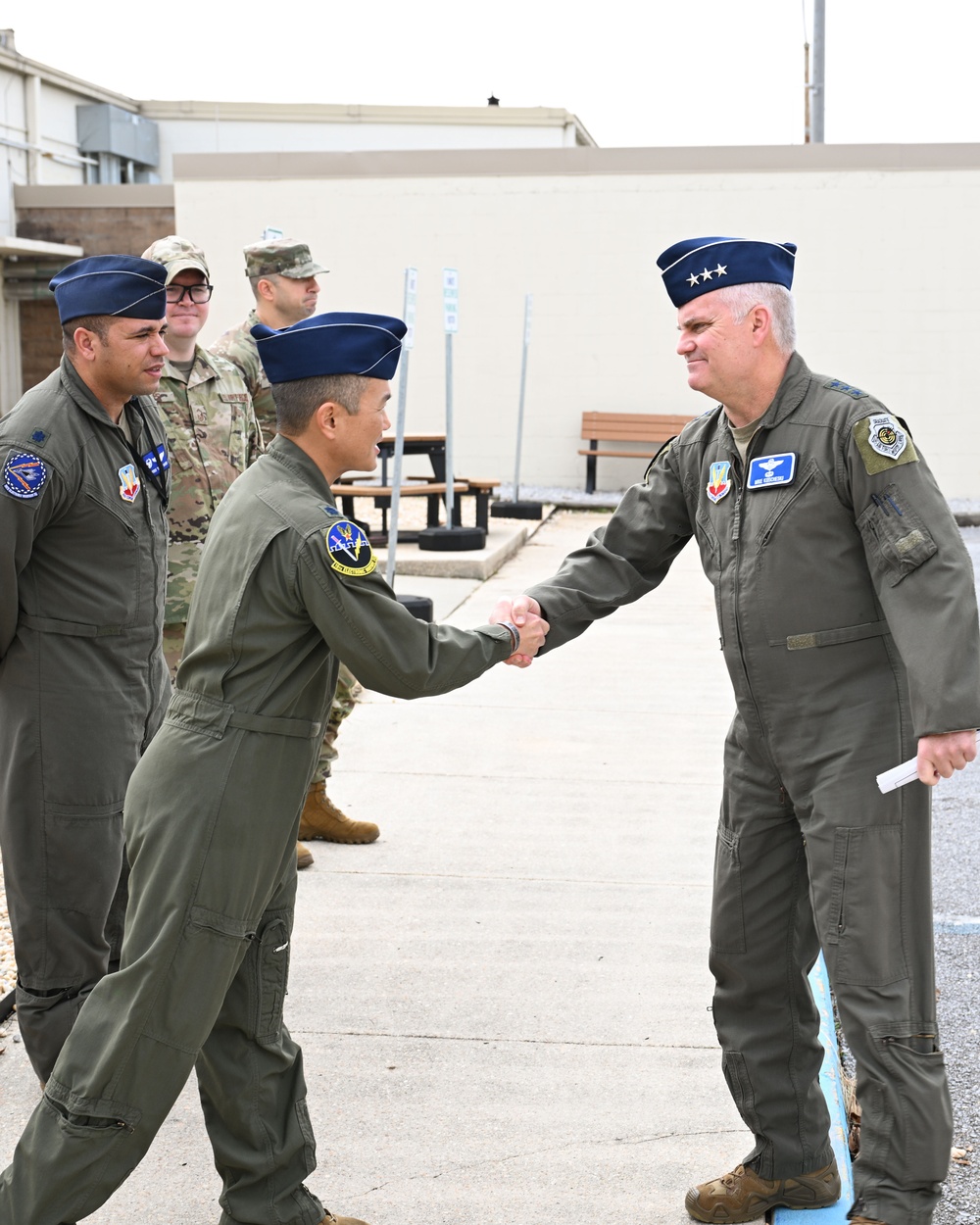DVIDS – News – Readiness: Dilemmas for Adversaries
As Air Combat Command continues to move swiftly to optimize its operations to meet the evolving demands of Great Power Competition, command leadership has emphasized readiness at all levels as key to presenting future dilemmas for adversaries.
Gen. Ken Wilsbach, commander of ACC, and Chief Master Sgt. Dave Wolfe, ACC command chief, both point to readiness as the critical enabler for ACC’s other strategic priorities: modernization, agile combat employment, and taking care of Airmen and families.
“There are two aspects of readiness – personal readiness and readiness of the unit,” Wilsbach said. “If you look across all four priorities, they accomplish both of these aspects.”
Personal readiness within ACC extends past the traditional aspects of preparation, like physical fitness, mental health, financial stability, and family well-being. While these elements remain crucial, ACC is expanding its focus to include cultivating a warrior ethos mindset. This shift emphasizes a comprehensive approach to readiness, ensuring that Airmen are prepared not only in body and mind, but also in technical proficiency across multiple facets, to meet the demands of the mission.
“To solve complex problems, you have to have the fundamentals down first,” Wolfe said. “You cannot become an expert in something if you do not follow the basic principles of your craft. The military’s basic principles are standards, discipline, and accountability.”
The command’s commitment to improving personal and unit readiness will be achieved through a comprehensive, bottom-up approach, which is already underway through implementation of the Air Force Force Generation deployment model. AFFORGEN involves rigorous training and exercises across four phases: reset, prepare, certify and available to commit. Each phase ensures Airmen, teams and units possess the skills and knowledge necessary to respond when called upon.
1. Prepare Phase: In the prepare phase, Airmen hone their skills with advanced training focused on the peer-level threat.
2. Certify Phase: In this phase, units engage in multi-unit, joint exercises to demonstrate and certify their readiness against peer-level adversaries.
3. Available to Commit: In this phase, Airmen are called upon to deploy with the teams they have trained and exercised with to respond to the needs of combatant commanders worldwide.
4. Reset Phase: This phase focuses on personnel rest and recovery, basic unit training, individual upgrade training, and aircraft readiness recovery.
By integrating these training efforts across the four phases, Airmen are not only well-prepared on an individual level but also as part of a larger, mission-ready force.
“Readiness starts at the unit level by making training and learning an everyday priority,” Wilsbach said. “We will challenge ourselves and learn from our mistakes at the flight level, then build upon those lessons at the squadron, group and wing levels, and eventually apply all of our honed skills in large-scale certification exercises.”
Bamboo Eagle is an example of these large exercises, which Wilsbach compares to a “300-level” college course. Its last iteration, which occurred in August 2024, brought together more than 3,000 service members, 150 aircraft and 20 units from across the joint force.
Wilsbach said the exercise focused on improving and refining Air Force readiness through complex, large-scale military operations, and demonstrated how the command can operate in contested environments on short notice.
“Bamboo Eagle was a highly effective exercise that allowed teams to practice Agile Combat Employment,” Wilsbach said, at this year’s Air, Space, & Cyber Conference. “It allowed wing commanders to get their forces in the air and execute missions that would be representative of those we may be asked to do in the Pacific.”
Even with the immense scale of Bamboo Eagle, Wilsbach noted future “400-level” exercises, will be even larger and feature more personnel and aircraft. These exercises will validate units’ training, gained throughout the AFFORGEN cycle, against a peer-level adversary in a joint-coalition environment.
“Next summer, the exercise we plan to do will be even larger and give many more opportunities to exercise our skills on a much grander scale,” Wilsbach said. “Between the virtual and live exercises we have planned, we have a great opportunity here in the near future to really up our game from the readiness standpoint.”
Success in an exercise of this scale or in future conflict will not happen overnight. Wolfe stressed that operational effectiveness starts with embedding readiness into daily operations and striving to get better every day.
“You have to come to work every day and figure out what needs to be done, then execute those tasks and priorities in a way that gets you incrementally better over time,” Wolfe said.
ACC’s strategic emphasis on readiness aligns with the broader Air Force objectives of maintaining an agile, well-prepared force capable of facing complex future threats. By fostering a continuous improvement and readiness culture, ACC aims to stay ahead in an era of increasing global competition.
| Date Taken: | 11.01.2024 |
| Date Posted: | 11.01.2024 09:06 |
| Story ID: | 484423 |
| Location: | JOINT BASE LANGLEY-EUSTIS, VIRGINIA, US |
| Web Views: | 6 |
| Downloads: | 0 |
PUBLIC DOMAIN

This work, Readiness: Dilemmas for Adversaries, by Capt. Barrett Schroeder, identified by DVIDS, must comply with the restrictions shown on https://www.dvidshub.net/about/copyright.


 Private Internet Access gives you unparalleled access to thousands
of next-gen servers in over 83 countries and each US state. Your
VPN experience will always be fast, smooth, and reliable.
Private Internet Access gives you unparalleled access to thousands
of next-gen servers in over 83 countries and each US state. Your
VPN experience will always be fast, smooth, and reliable.![DVIDS – Images – U.S. SOCOM emphasizes readiness, lethality during NDIA Special Operations Symposium [Image 4 of 6] DVIDS – Images – U.S. SOCOM emphasizes readiness, lethality during NDIA Special Operations Symposium [Image 4 of 6]](https://101veterans.com/wp-content/uploads/2025/02/1740594994_1000w_q95.jpg)

![DVIDS – Images – DM’s Special Warfare Airmen conduct a cave search and rescue exercise [Image 5 of 9] DVIDS – Images – DM’s Special Warfare Airmen conduct a cave search and rescue exercise [Image 5 of 9]](https://101veterans.com/wp-content/uploads/2025/02/1740508440_1000w_q95.jpg)